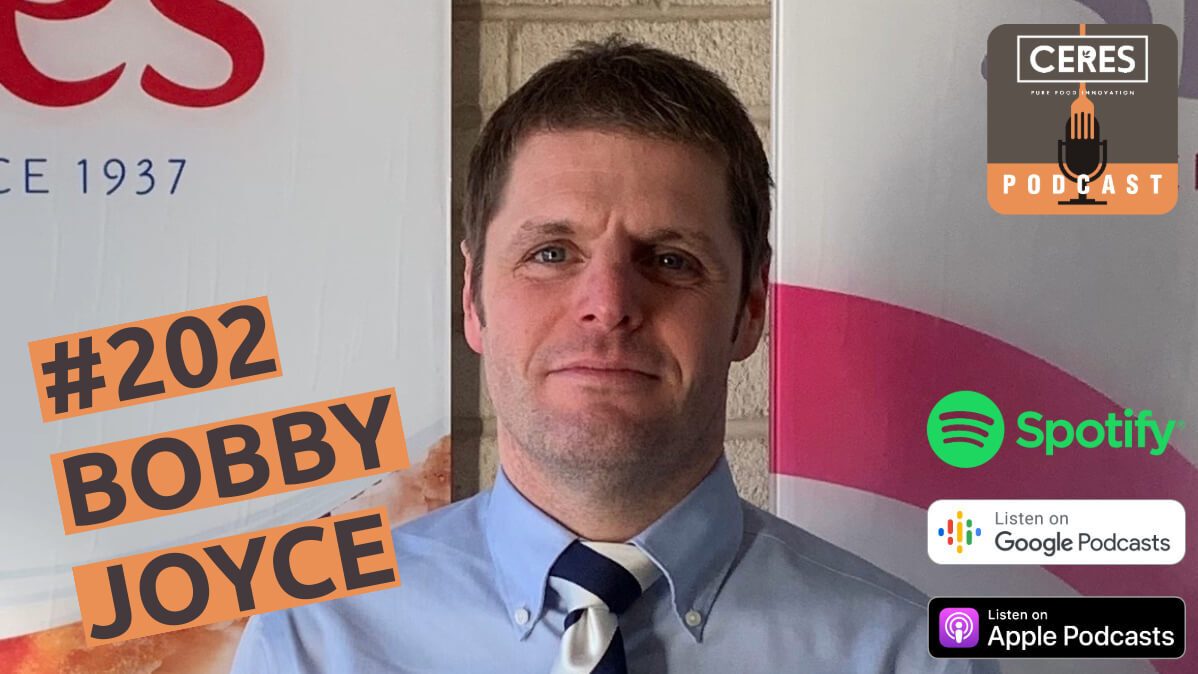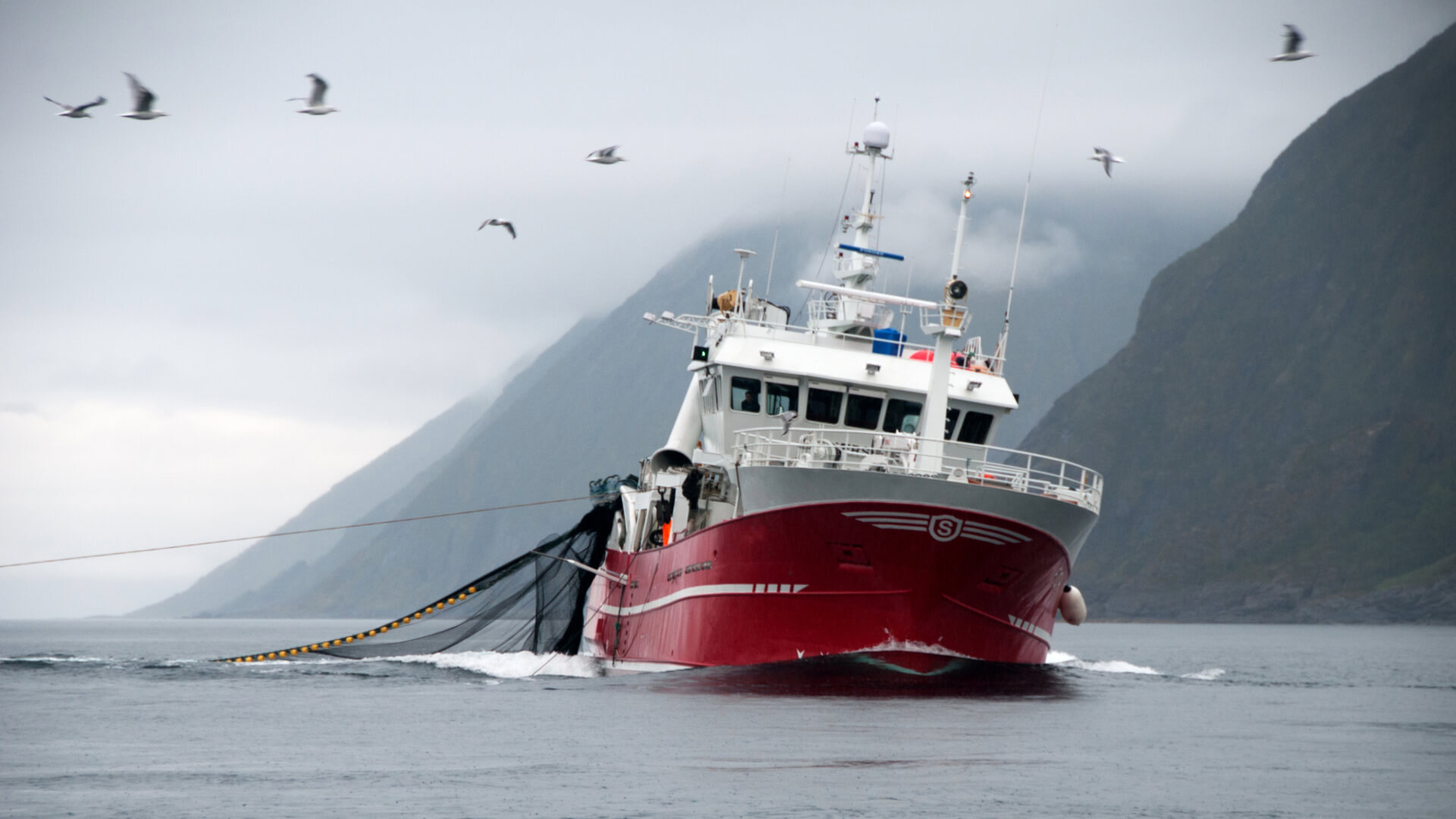Episode 202: Bobby Joyce Talks Fish Prices, Supply Challenges & Industry Survival
Posted by Emma on 6th Feb 2025 Reading Time:
The fish and chip industry is no stranger to change, but a few episodes of The Ceres Podcast have captured the challenges and opportunities ahead. On the back of Episode 199 with Gary Warner, we now carry on the frozen-at-sea theme by jumping over to Bobby Joyce from Smales. Hosted by Stelios Theocharous and David Miller, this master class interview dives deep into the realities of fish supply, pricing, and the broader industry landscape. If you run a fish and chip shop or have a stake in the seafood business, this is an episode you won’t want to miss.

From the outset, the conversation sets the tone for a candid and insightful discussion. Bobby Joyce, a returning guest with a wealth of knowledge, reflects on how the industry has evolved since his first appearance in Episode 8. He’s an open book, offering unfiltered insights into the realities of sourcing fish, navigating supply chain challenges, and managing customer expectations in a volatile market.
One of the episode’s key themes is the ongoing turbulence in fish supply. Cod and haddock prices have fluctuated due to reduced quotas, shifting global demand, and economic pressures. Bobby explains that the cod quota for the Barents Sea is now at its lowest in 34 years, a staggering decline that’s placing strain on supply. The industry is bracing for continued challenges, with quotas dropping from around 900,000 tons a decade ago to just 340,000 tons. The conversation also highlights the knock-on effects of the minimum wage increase and rising operational costs, which are hitting businesses hard.
 But amidst the doom and gloom, Bobby, Stelios, and David explore ways for fish and chip shops to navigate these headwinds. One takeaway is the importance of portion control and pricing strategy. With costs rising, businesses must manage margins efficiently—adjusting portion sizes, bundling lunchtime deals, or finding ways to streamline operations. Bobby points out that shops have historically been slow to optimise their energy usage, only making changes when prices skyrocketed. The same lesson applies to food costs: shops that proactively manage their stock and pricing will fare better than those that react too late.
But amidst the doom and gloom, Bobby, Stelios, and David explore ways for fish and chip shops to navigate these headwinds. One takeaway is the importance of portion control and pricing strategy. With costs rising, businesses must manage margins efficiently—adjusting portion sizes, bundling lunchtime deals, or finding ways to streamline operations. Bobby points out that shops have historically been slow to optimise their energy usage, only making changes when prices skyrocketed. The same lesson applies to food costs: shops that proactively manage their stock and pricing will fare better than those that react too late.
Another hot topic is the shifting demand for fish. Bobby shares insights on how some shops experiment with alternative species, including coley and hake, to diversify menus. However, the consensus is clear—while there’s room for other fish, cod and haddock remain the gold standard.

Customers might grumble about price increases, but many remain fiercely loyal to their favourite fish. This leads to a fascinating discussion about consumer psychology: people will moan about the cost of fish and chips, yet they’ll still pay a premium for their preferred choice. It’s the same logic that sees shoppers complain about the price of Heinz beans but refuses to switch to a supermarket brand.
Beyond supply issues, the episode also touches on changing consumer habits. The lunchtime trade has taken a hit recently, with fewer office workers and increased competition from supermarket meal deals. However, there’s optimism that lunchtime footfall could return as more people return to the office. Shops that adapt—offering fast, convenient, and well-priced lunch options—could see tangible benefits.
Stelios shares insights from Mark Petrou, who suggests a dedicated lunchtime menu with quick-service items could help fish and chip shops compete more effectively.
A standout moment in the episode is when the discussion turns to branding and presentation. Bobby emphasises that the way fish and chips are presented—whether through packaging, shop appearance, or online presence—matters more than ever. Customers are willing to pay for quality but expect an experience to match. Whether it’s premium packaging, sleek branding, or a modernised shopfront, businesses that invest in their image will have an edge.
The conversation then pivots to aggregators like Deliveroo and Just Eat. David points out that customers ordering via apps often don’t even check the price—they tap and order. The hosts discuss how fish and chip shops can leverage this shift in buying behaviour to their advantage, making it easy for customers to purchase without friction. While traditionalists may hesitate, the reality is that delivery and digital ordering aren’t going away.
As the episode winds down, the discussion circles back to the fundamental truth of the industry: quality and consistency are king. Fish and chips have a unique place in British culture, and despite the economic challenges, customers will always crave a significant portion of freshly fried fish and golden chips. However, as Bobby, Stelios, and David emphasise, the shops that thrive will be the ones that adapt, invest in their product, and understand the shifting landscape.
Episode 202 is a must-listen for anyone in the fish and chip trade. It’s packed with valuable insights, practical advice, and candid discussions about the realities of running a fish business in today’s economy. If you haven’t already, tune in and subscribe to The Ceres Podcast—because staying informed and ahead of the game is the best investment you can make for your shop’s future.

